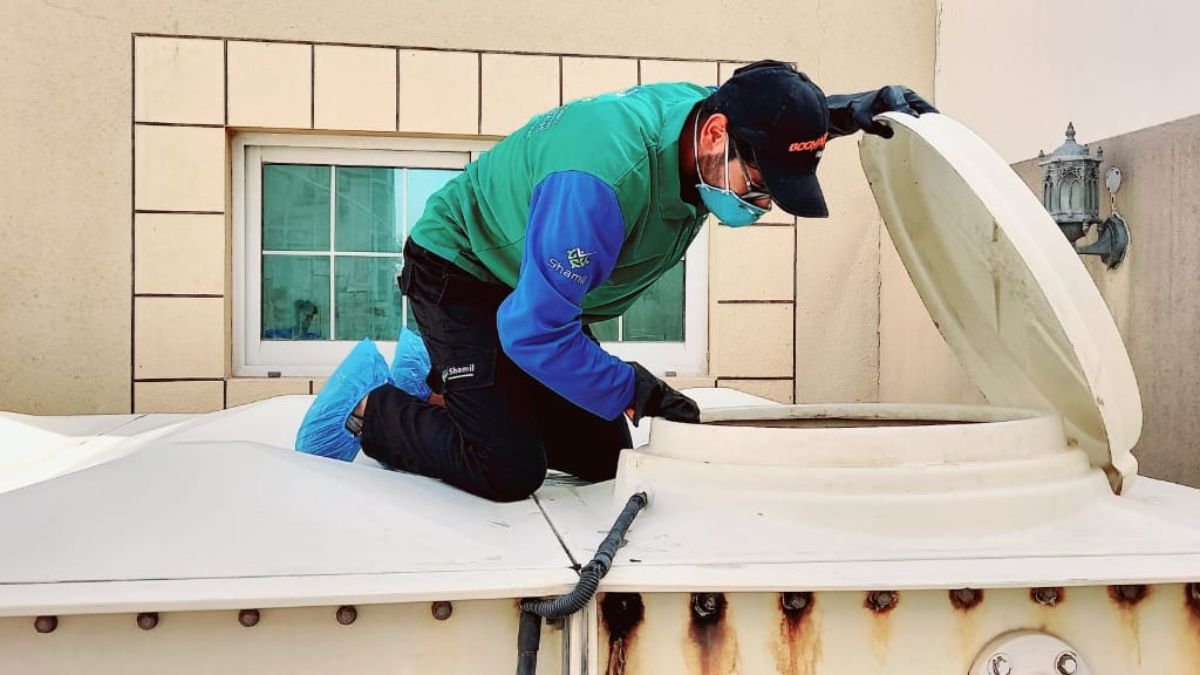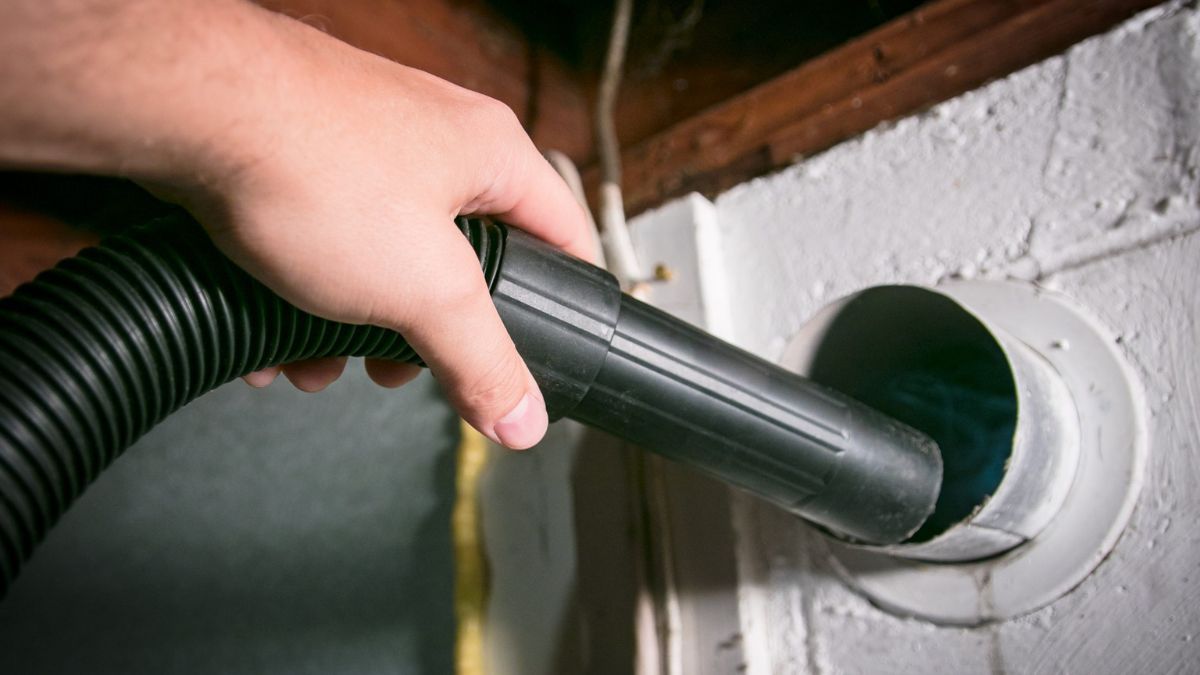TOPIC
How Often Should You Clean Your Water Tank? A Guide for Abu Dhabi Residents

Water tank maintenance is crucial for ensuring safe and clean water in Abu Dhabi homes and businesses. With temperatures often soaring, regular cleaning is especially important to prevent bacteria and algae from contaminating stored water. This article will guide you on the ideal frequency for water tank cleaning in Abu Dhabi and the reasons why routine maintenance is essential.
Why Regular Water Tank Cleaning Matters
In Abu Dhabi, water tanks are exposed to harsh weather, high temperatures, and sometimes sandstorms, all of which can lead to the buildup of dirt, sediment, and microorganisms in the water supply. Over time, these contaminants can affect water quality, making it unsuitable for drinking, cooking, or cleaning. Regular water tank cleaning not only protects your health but also helps extend the life of your tank and water systems.
How Often Should You Clean Your Water Tank?
Most experts recommend cleaning your water tank at least twice a year to maintain optimal water quality. However, depending on factors like usage, water quality, and environmental conditions, the frequency may vary. Here are some general guidelines to help you determine the best cleaning schedule:
Residential Properties
For homes, cleaning your water tank every 6 months is generally sufficient. However, if you notice any foul odors, discoloration, or sediment buildup, it’s wise to clean it sooner.
Commercial Properties
In high-usage environments like office buildings, hotels, or restaurants, it’s recommended to clean tanks every 3-4 months due to the higher volume of water usage.
Extreme Weather
Abu Dhabi’s hot climate and occasional dust storms can lead to quicker contamination of water tanks. If there’s been an intense storm or heat wave, consider an extra cleaning session.
Signs Your Water Tank Needs Cleaning
Apart from regular scheduling, there are some clear indicators that your tank needs immediate cleaning:
Water discoloration
If the water appears cloudy or has a yellowish tint, it’s likely due to sediment or bacterial buildup.
Unpleasant odor
Foul-smelling water can be a sign of bacterial contamination.
Sediment buildup
Over time, dirt and minerals can settle at the bottom of the tank, affecting water quality.
If you observe any of these signs, it’s time to consider water tank cleaning Abu Dhabi services to ensure safe, clean water for your household.
Choosing the Right Water Tank Cleaning Service in Abu Dhabi
For effective cleaning, it’s best to hire a professional service specializing in water tank cleaning in Abu Dhabi. Professionals use the right equipment and disinfectants to thoroughly clean and sanitize tanks, ensuring that your water supply remains safe.
Final Thoughts
Regular water tank cleaning is essential to maintaining water quality, especially in Abu Dhabi’s challenging climate. By cleaning your water tank every 6 months or more frequently if needed, you can avoid water contamination and ensure that your home or business has a reliable, clean water supply. Prioritizing water tank cleaning Abu Dhabi services will safeguard the health of your family or customers and keep your water systems functioning at their best.
TOPIC
Is It Illegal to Video Record Someone Without Their Permission in Public?

It seems like everywhere you go these days, someone is recording something. Have you ever been caught in the background of a video during a bad hair day and wondered: “Is it illegal to video record someone without their permission in public?”
If you live in a large city, it may feel impossible to escape the camera. With the prevalence of CCTV and individuals trying to become internet famous, are you allowed to have any sense of anonymity when you leave the house?
This article will detail your legal rights as they pertain to your likeness in someone else’s video. If you were the victim of an “internet prankster,” this is the article for you. The following will detail your rights, the recorder’s rights, and your next steps.
But first, it is important to determine the who, what, where, when, and why of the recording.
Is It Illegal to Video Record Someone Without Their Permission in Public?
The simple answer is no. When one leaves the house, they should consider that it is legal for others to record them in most public spaces. But there are some particular instances where this is not true. For example, recording in the changing room of an outlet store is definitely illegal, as well as in any bathroom or location behind a secured access door.
This is sort of a common-sense issue, but it is worth considering whether this person recorded you in a place where cameras are not allowed. Another example may be certain federal buildings or land. Buildings like the Department of Labor in Washington, D.C., are allowed to dictate where and when you record within their premises.
In particular cases, private companies have the right to stop you from recording even in a public location. If you were recorded at a nightclub that strictly doesn’t allow cameras, representatives of the company may be able to get the video deleted from the recordist’s phone. However, it is much harder to push legal action in cases like this, as a company’s policy is not the law.
The answer to “Is it illegal for this person to record me?” is a bit complicated as it pertains to state, private vs public property, and context. However, in most cases, recording someone in a private space without their consent is much simpler.
Is It Illegal to Video Record Someone Without Their Permission in a Private Space?
In most states, recording someone in a private space, especially in a compromising moment, is illegal. This is called video voyeurism and can lead to fines, jail time, and even registration on the national sex offenders registry. Nonetheless, certain states have something called the one-party consent law, in which you can record anyone without their knowledge as long as you are part of the interaction being recorded.
Placing hidden cameras in bathrooms, recording sexual acts, or recording any sexual act without all participants’ consent is highly illegal in most states and considered a serious violation of privacy.
In most states, video voyeurism is classified as a felony charge, carrying severe legal penalties. These actions not only violate legal boundaries but also cause emotional and psychological harm to the victims. There is even a case to be made if you consented to a video but not its distribution. Cases like these fit under the label of “revenge porn.”
I’ve Been Recorded Without Consent, What Should I Do?
First, you should obtain as much knowledge as you can on the person who recorded you. Understanding who they are can often help you confirm what they intend to do with the footage. This process is paramount to taking legal action.
Using a people search engine is a powerful method for obtaining information about anyone. If you can find the first and last name of the person who recorded you, you’re well on your way to finding out who they are. Additionally, gathering details such as their phone number, address, social media profiles, and even their online dating profiles can provide valuable context for your next steps.
Is It Illegal to Video Record Someone Without Their Permission in Public: Next Steps
Using people search engines will lead to a variety of revelations about who the assailant is. These websites can dredge up their educational background, current and past addresses, but most importantly for legal action, their criminal records, sexual offender status, as well as their court records.
It is possible that this is not their first time recording someone without consent. Getting this information will help you confirm whether you have the right to take legal action.
TOPIC
Dryer Vent Cleaning Pacific Palisades: Why It’s More Than Just a Chore

Introduction: A Commonly Skipped Task That Matters
Let’s be honest—most of us don’t give our dryer vent a second thought. We throw in our laundry, press a button, and go about our day. But here’s the thing: that hidden vent behind your dryer? It’s doing a lot more than you think. And when it’s clogged, the whole system starts working harder, using more energy, and slowly wearing itself down. We’ve worked with homes across the area and know precisely which signs indicate trouble. That’s why we always remind homeowners about Dryer Vent cleaning Pacific Palisades, especially if they haven’t done it in a while. This isn’t about selling a service—it’s about protecting your home, your time, and your peace of mind.
How a Dirty Vent Starts Quietly Causing Trouble
You won’t always notice the signs right away. A few extra minutes were added to the drying cycle—a warm laundry room. The clothes may feel a little musty after a spin. On their own, these things feel minor. However, when they start piling up, it’s often because the air inside your dryer isn’t circulating as it should. Lint and dust, small as they are, love to cling to the inside of the vent. Over time, that buildup cuts off airflow, traps moisture, and creates heat. That mix isn’t just inefficient—it’s dangerous. And most people don’t notice the damage until it’s already done.
What You’re Risking When You Wait Too Long
It’s not just about drying times or electricity bills. A clogged dryer vent can push your machine to its limits. That extra heat can melt parts inside your dryer or even spark a fire. It sounds dramatic, but it happens more often than you might expect, especially in homes where vents are long, twisty, or located in hard-to-reach areas. That includes many places in Pacific Palisades. The combination of complex home layouts and coastal moisture makes regular cleaning even more critical.
Energy Waste Adds Up—Fast
Every time your dryer has to work harder, it pulls more power. That energy gets wasted on longer cycles, repeated loads, and a machine that’s constantly running at max effort. You may not notice it on one electric bill, but across weeks and months, that cost stacks up. And while energy use rises, your dryer takes a hit, too. The motor gets tired. Belts stretch out. Sensors wear down. Eventually, you’re either calling in repairs or shopping for a new machine. Either way, it’s avoidable—and a quick cleaning can extend your dryer’s life by years.
Let’s Talk About What a Cleaning Does
This isn’t a quick swipe with a duster. A real dryer vent cleaning clears everything from the wall connection through to the outside vent cover. That includes lint, pet hair, dust, and even small debris that might have found its way in. In some cases, bird nests, leaves, or insulation may block the exit. A sound technician uses tools to break that buildup loose, then safely removes it without damaging your vent line.
The best part? You’ll feel the difference right away. Clothes dry faster. The machine runs quieter. The room stays cooler. It’s one of the simplest fixes that delivers noticeable improvements almost instantly.
When Should You Schedule a Dryer Vent Cleaning?
Here’s a simple checklist that can help you figure out if it’s time:
- Your clothes are taking longer to dry than they used to.
- The laundry room feels warmer after using the dryer.
- You smell something “burnt” after a cycle.
- It’s been over 12 months since your last cleaning.
- You live in an older home or one with long vent routes.
If any of this sound familiar, don’t wait. The sooner you act, the less you’ll risk—both financially and physically.
It’s a Small Job That Makes a Big Difference
Many aspects of home maintenance can feel overwhelming. Fixing a roof and replacing pipes. Dealing with wiring. But dryer vent cleaning? It’s fast, affordable, and incredibly effective. There’s no messy prep, no need to move heavy furniture, and no significant disruption to your day. It’s one of the few home services that saves time, lowers bills, and improves safety simultaneously. And yet, so many people overlook it until something goes wrong.
Let’s Keep Your Home Safer and Smarter
We know how easy it is to forget about the things we don’t see. But ignoring them can come back to bite you. Cleaning your dryer vent doesn’t take long, and the results speak for themselves. You’ll save on energy, extend your dryer’s life, and sleep a little easier knowing your home is safer. So, let’s not wait for the warning signs. Let’s handle it before it becomes a problem.
If your dryer hasn’t had a proper vent cleaning in the past year, now’s the time. We’re here to help you get it done the right way.
TOPIC
Offshore Teams: All You Need to Know for Effective Collaboration

In today’s global marketplace, offshore teams offer access to specialized skills, cost efficiencies, and around-the-clock operations. Yet distance, cultural differences, and legal complexities can create friction. By combining intentional collaboration practices with robust infrastructure—and leveraging an Employer of Record for compliance—organizations can transform dispersed groups into cohesive, high-performing units.
Why Offshore Teams Matter
Offshoring extends your talent pool and optimizes costs without sacrificing quality. When managed well, offshore teams:
- Provide 24/7 coverage, increasing responsiveness.
- Access niche expertise in markets like India, Eastern Europe, or Latin America.
- Deliver cost savings of 20–40% on labor expenses.
- Enable rapid scaling for project-based or long-term initiatives.
However, without clear processes and cultural alignment, offshore teams risk miscommunication, disengagement, and missed deliverables.
Building the Foundation for Collaboration
Effective collaboration rests on four pillars: communication, culture, process, and compliance.
1. Communication Protocols
Clear, consistent communication prevents misunderstandings across time zones:
- Defined channels: Use Slack for daily check-ins, email for formal updates, and Zoom for weekly video stand-ups.
- Response SLAs: Agree on expected reply times (e.g., 4 hours during overlap windows).
- Asynchronous workflows: Document decisions in shared platforms (Notion or Confluence) so all team members stay informed.
2. Cultural Intelligence
Bridging cultural gaps strengthens trust and engagement:
- Cultural training: Offer workshops on communication styles and work norms—for instance, direct feedback in Northern Europe versus more indirect approaches in East Asia.
- Celebrate diversity: Recognize regional holidays and milestones (e.g., Diwali, Mid-Autumn Festival) in team events.
- Local champions: Empower in-country leads to advise on local etiquette and customs.
3. Standardized Processes
Uniform workflows ensure quality and predictability:
- Onboarding checklists: Include role expectations, tools access, and process tutorials.
- Task management: Leverage Asana or Jira with standardized templates and tagging conventions.
- Quality controls: Implement peer reviews and code or document audits to maintain standards across sites.
4. Compliance and EOR Partnership
Legal and administrative burdens can stall global teams. An Employer of Record simplifies:
- Payroll and benefits: The EOR handles local tax withholding, social contributions, and statutory benefits.
- Employment contracts: EOR issues compliant contracts, reducing misclassification risks.
- Regulatory updates: In-country experts monitor labor-law changes, ensuring ongoing compliance.
Enabling Team Cohesion
Fostering interpersonal bonds counteracts the isolation of remote/offshore work:
Virtual Team Building
- Regular “water-cooler” events: Host themed coffee breaks or trivia sessions.
- Pair rotations: Rotate two-week “buddy” assignments between onshore and offshore members.
- All-hands retreats: Schedule annual or biannual meetups—physical or virtual—to reinforce relationships.
Recognition and Feedback
Consistent acknowledgment motivates and aligns performance:
- Public shout-outs: Highlight accomplishments in team channels or meetings.
- Peer recognition platforms: Use tools like Bonusly to facilitate small, frequent rewards.
- Continuous feedback: Institute monthly one-on-one check-ins for career development and support.
Measuring Offshore Team Performance
Data-driven insights help refine collaboration strategies:
- Delivery metrics: Track on-time completion rate and quality benchmarks.
- Engagement scores: Use pulse surveys to gauge team morale and identify pain points.
- Utilization rates: Monitor capacity versus allocation to balance workload.
- Communication efficacy: Measure response times and meeting effectiveness via platform analytics.
Review these KPIs quarterly to iterate processes and address emerging challenges.
Overcoming Common Challenges
| Challenge | Solution |
| Time zone overlap limitations | Identify core “golden hours” and rotate schedules quarterly. |
| Misaligned expectations | Document clear SLAs, deliverable definitions, and acceptance criteria. |
| Technology accessibility | Provide standardized toolsets and budget for necessary hardware. |
| Legal and tax complexities | Engage an EOR to centralize compliance and administrative tasks. |
Next-Level Collaboration: Emerging Trends
- AI-assisted workflows: Automated updates and translation tools break down language barriers.
- Distributed leadership: Empower local leads with decision rights within a global governance framework.
- Virtual reality meetups: Immersive environments recreate office presence for deeper engagement.
- Integrated EOR platforms: Unified dashboards merge HR, payroll, and performance data for holistic management.
Conclusion
Offshore teams unlock unparalleled talent and efficiency—if collaboration is intentionally engineered. By establishing clear communication, fostering cultural intelligence, standardizing processes, and partnering with an Employer of Record for compliance, organizations can build resilient, high-performing global teams. Embrace data-driven iteration and emerging technologies to refine your approach, and turn geographic distance into a strategic asset.
-

 TECHNOLOGY1 week ago
TECHNOLOGY1 week agoTop 10 Must-Read Stories from Kristen Archives You Can’t Miss
-

 TECHNOLOGY6 months ago
TECHNOLOGY6 months agoSky Bri Net Worth Revealed: How She Built Her Financial Empire
-

 TOPIC8 months ago
TOPIC8 months agoBasement Renovation Contractors: How They Tackle Structural Issues During Renovations
-

 TOPIC3 months ago
TOPIC3 months ago5 Reasons the //Vital-Mag.Net Blog Dominates Lifestyle
-

 TOPIC1 month ago
TOPIC1 month agoTop 10 Articles from the ://Vital-Mag.net Blog That You Can’t Miss
-

 CRYPTO4 months ago
CRYPTO4 months agoCrypto30x.com Review: Is It the Right Platform for You?
-

 BUSINESS2 weeks ago
BUSINESS2 weeks agoTraceLoans Explained What You Need to Know
-

 BUSINESS3 weeks ago
BUSINESS3 weeks agoDecoding the Kennedy Funding Ripoff Report: Facts vs. Fiction
